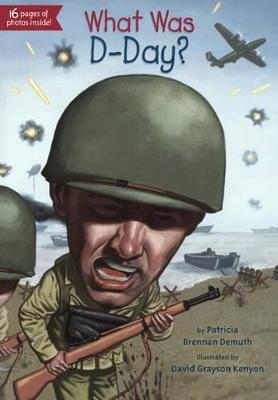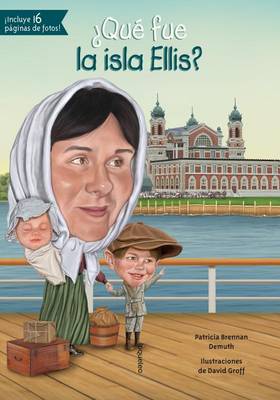What Was...
7 total works
D-Day significó el principio del fin para la Alemania nazi y el Tercer Reich. Los lectores se sumergirán en el corazón de la acción y descubrirán cómo se planificó y llevó a cabo y cómo abrumó a los alemanes que habían sido engañados pensando que el ataque tendría lugar en otra parte.
D-Day spelled the beginning of the end for Nazi Germany and the Third Reich. Readers will dive into the heart of the action and discover how it was planned and carried out and how it overwhelmed the Germans who had been tricked into thinking the attack would take place elsewhere.
D-Day spelled the beginning of the end for Nazi Germany and the Third Reich. Readers will dive into the heart of the action and discover how it was planned and carried out and how it overwhelmed the Germans who had been tricked into thinking the attack would take place elsewhere.
From 1892 to 1954, Ellis Island was the gateway to a new life in the United States for millions of immigrants. In later years, the island was deserted, the buildings decaying. Ellis Island was not restored until the 1980s, when Americans from all over the country donated more than $150 million. It opened to the public once again in 1990 as a museum. Learn more about America's history, and perhaps even your own, through the story of one of the most popular landmarks in the country.
A terrifying attack!
On December 7, 1941, Japanese war planes appeared out of nowhere to bomb the American base at Pearl Harbor in Hawaii. It was a highly secretive and devastating attack: four battleships sunk, more than two thousand servicemen died, and the United States was propelled into World War II. In a compelling, easy-to-read narrative, children will learn all about a pivotal moment in American history.
On December 7, 1941, Japanese war planes appeared out of nowhere to bomb the American base at Pearl Harbor in Hawaii. It was a highly secretive and devastating attack: four battleships sunk, more than two thousand servicemen died, and the United States was propelled into World War II. In a compelling, easy-to-read narrative, children will learn all about a pivotal moment in American history.
Enseña las fechas importantes y datos sobre el ataque sorpresa a Pearl Harbor el 7 de Diciembre 1941.
"Fue la puerta de entrada a una nueva vida en Estados Unidos para millones de personas. Los enemigos de Estados Unidos fueron retenidos aquí durante la Primera y Segunda Guerras Mundiales...[pero,] ahora es un museo que rinde homenajea la historia de los inmigrantes"--Cover.
Describes the history of Ellis Island, a gateway for many immigrants coming to the United States in the nineteenth and early twentieth centuries, and details the restoration of the landmark and its reopening as a museum.
Describes the history of Ellis Island, a gateway for many immigrants coming to the United States in the nineteenth and early twentieth centuries, and details the restoration of the landmark and its reopening as a museum.
We the people at Who HQ bring readers the full story--arguments and all--of how the United States Constitution came into being.
Signed on September 17, 1787--four years after the American War for Independence--the Constitution laid out the supreme law of the United States of America. Today it's easy for us to take this blueprint of our government for granted. But the Framers--fifty-five men from almost all of the original 13 states--argued fiercely for many months over what ended up being only a four-page document. Here is a fascinating behind-the-scenes look at the hotly fought issues--those between Northern and Southern States; big states and little ones--and the key players such as James Madison, Alexander Hamilton, and George Washington who suffered through countless revisions to make the Constitution happen.
Signed on September 17, 1787--four years after the American War for Independence--the Constitution laid out the supreme law of the United States of America. Today it's easy for us to take this blueprint of our government for granted. But the Framers--fifty-five men from almost all of the original 13 states--argued fiercely for many months over what ended up being only a four-page document. Here is a fascinating behind-the-scenes look at the hotly fought issues--those between Northern and Southern States; big states and little ones--and the key players such as James Madison, Alexander Hamilton, and George Washington who suffered through countless revisions to make the Constitution happen.






